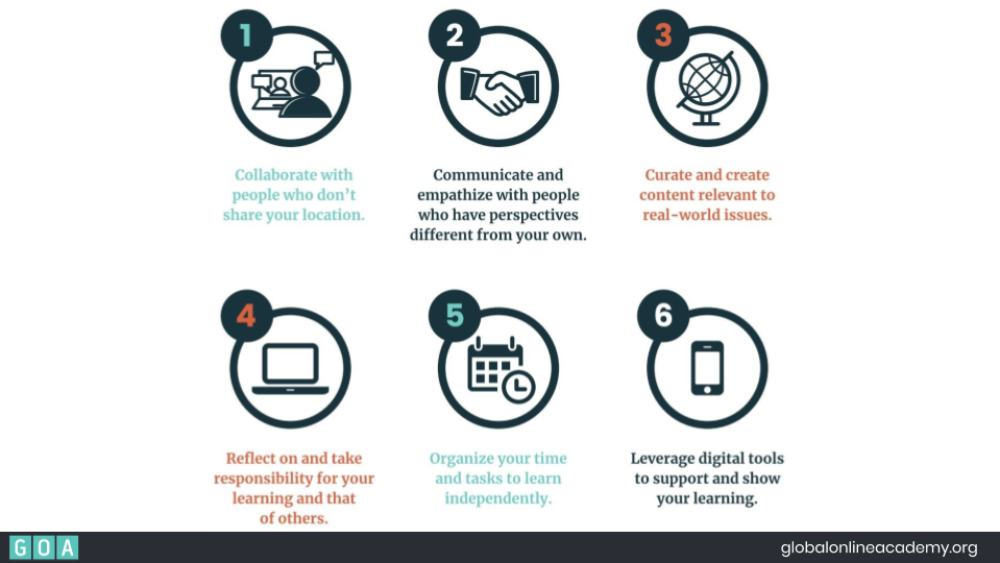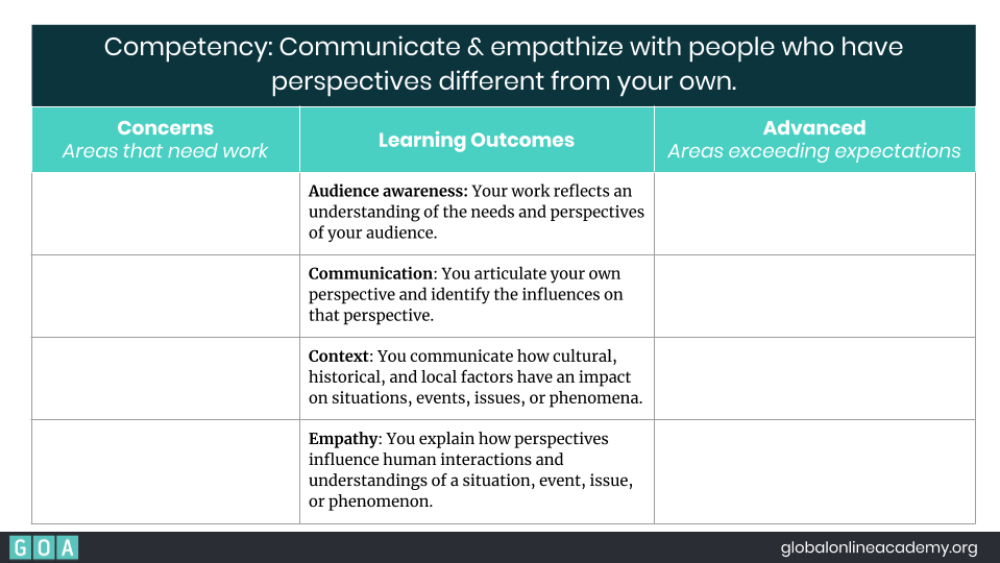How to Design a Competency-Based Assessment
How might a focus on skills instead of content change the way we design assessments?
The promise of competency-based learning is a learning environment that better reflects the world our students are preparing to enter. Designing competency-based assessments is about creating opportunities for demonstration of important skills in authentic contexts. The purpose of these assessments is to focus less on collecting data for the teacher and more on empowering students to demonstrate what they’ve learned, reflect on how they’re doing, and plan what they’ll learn next.
Before I outline a four-step process for designing these assessments, I’ll emphasize a core principle of competency-based learning: student ownership. It’s important to recognize that at every stage of the process below, you can involve students as co-designers.
Step One: Articulate Competencies
What do we want students to know and be able to do? This question, which drives Wiggins and McTighe’s Understanding by Design Framework, also underlies the first step in competency-based assessment design.
The essential skills students need to succeed in the world beyond school — what I’ll call “competencies” here — should drive the philosophy and purpose of assessments. They should be transferable, observable, transdisciplinary, and accessible to students. As Chris Sturgis of CompetencyWorks writes, a well-articulated competency “will be valuable ten years from now even if the content knowledge has changed.”
As an example, below are the six core competencies that drive learning in GOA student courses.

No matter which GOA course our students take — Arabic, Philosophy, Multivariable Calculus, Neuropsychology — their work is geared towards developing these skills. This is how to think about the relationship between competencies and content: competencies provide the framework for how we want students to learn and what we want to assess them on, and excellent content provides depth and deeper meaning to those assessments.
How to engage students in this work: Ask them what success in learning looks like. Ask them to share their goals and visions for their futures. Collaborate with them to translate their answers into competencies they can develop in school.
Step Two: Develop Evidence of Competencies
Evidence of skill development — what we call “learning outcomes” at GOA — are the criteria teachers and students use to assess student work. As Ron Berger argues in Leaders of Their Own Learning, these outcomes must focus on learning targets, not tasks. A competency-based assessment doesn’t aim to measure how quickly/completely a student can finish tasks or comply with instructions; rather, it aims to articulate clearly what the student should be able to do as a result of completing the assessment. For this reason, learning outcomes are often framed as “I can…” statements to reinforce the idea that the target is met only when the knowledge is successfully applied in a demonstrable way. For detailed examples, see Asia Society’s Global Competence Performance Outcomes.
How to engage students in this work: Have them select a competency or competencies and ask them, “What does success look like in this area? How will I know you’ve mastered this skill?”
Step 3: Build Student-Friendly Rubrics
In competency-based learning, a rubric is used for far more than scoring. Rubrics built on clearly articulated competencies and learning outcomes can be used to establish clarity with students about what they’re learning and why they’re learning it. They are also essential tools for teachers to calibrate understanding of quality performance: collaborative teacher review of student work using rubrics is a regular element of competency-based learning. Finally, they are tools for assessment: students and teachers can use the rubric to measure performance, reflect on learning, and plan next steps.
Because competency-based learning is not a time-based system, students frequently have the opportunity to revisit learning activities and be reassessed, supported by formative feedback and routine metacognitive reflection. Formats like the single-point rubric below allow a rubric to anchor an ongoing conversation about learning between student and teacher rather than merely deliver points.

How to engage students in this work: Have them build personalized rubrics using competencies and outcomes you (or you and they) have articulated. Let them choose the learning outcomes that matter the most to the work they want to do.
Step 4: Create the Learning Experience(s)
Only after the intentional process of articulating competencies and outcomes should we think about how students will demonstrate these skills via learning experiences. There are many ways to demonstrate these skills, so the products of the assessment — the students’ work — should be varied and interesting.
I’ve found it helpful to think about the apprenticeship model, where students, with the support of a mentor, learn the field through authentic practice (a blacksmith’s apprentice makes a horseshoe, or a carpenter’s apprentice makes a birdhouse). When it comes to more academic work, think about what Jal Mehta and Sarah Fine call “cognitive apprenticeships,” where the essential question is not “What is the content I need to cover?” and is instead “What does it mean to think in the domain?” This shift allows teachers to organize learning around purpose and meaning, culminating in student exhibitions of learning that might contribute to the domain.
What does this look like?
The best way to recognize a competency-based learning experience is to look at the work students produce and the learning environment in which they produce it.
- You will find excellent content tied to a larger purpose, much like how these three teachers used computational thinking to help students pursue social justice.
- You will find teachers taking more flexible, nonlinear approaches to curriculum to better suit students’ individual needs and interests.
- You will find students designing their own assessments by selecting, in collaboration with their teachers, the outcomes against which their learning should be measured.
- You will find teachers and students using the competencies and outcomes to engage in regular, open reflection on learning.
How to engage students in this work: Empower them to be learning designers and project managers. Let them use the rubric to design an experience where they can demonstrate the learning outcomes in an authentic way. Give them the responsibility of planning, executing, and presenting their work for assessment.
Ready to design for competency-based learning? Purchase our Competency-Based Learning Toolkit, the ideal tool for teams of educators looking to prioritize mastery and personalization.
